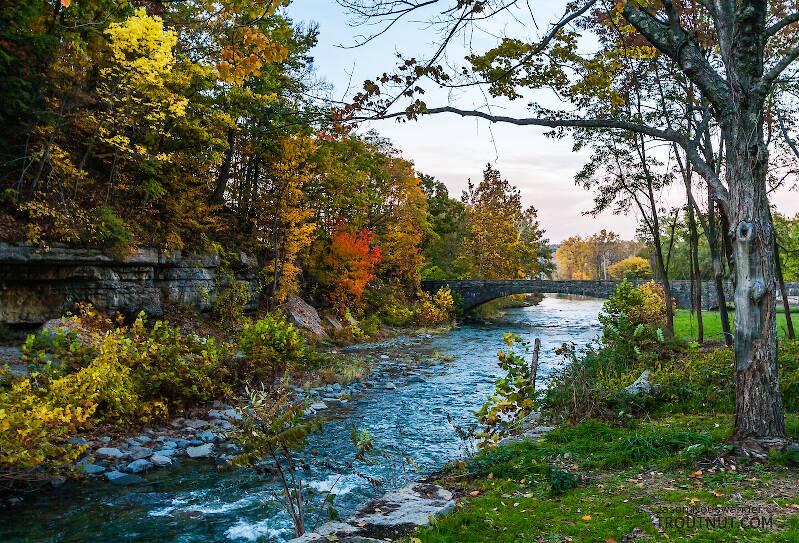
Salmonflies
Pteronarcys californica
The giant Salmonflies of the Western mountains are legendary for their proclivity to elicit consistent dry-fly action and ferocious strikes.

- The prosternal horn is present.
- The mandible is clearly toothed, not formed into a uniform scraper blade.
- The seems to be only 2 major setae on the ventral edge of the hind femur.
- Chloride epithelia seem to be absent from the dorsal side of any abdominal segments.
Based on these characteristics and the ones more easily visible from the pictures, this seems to be Grammotaulius. The key's description of the case is spot-on: "Case cylindrical, made of longitudinally arranged sedge or similar leaves," as is the description of the markings on the head, "Dorsum of head light brownish yellow with numerous discrete, small, dark spots." The spot pattern on the head is a very good match to figure 19.312 of Merritt R.W., Cummins, K.W., and Berg, M.B. (2019). The species ID is based on Grammotaulius betteni being the only species of this genus known in Washington state.

Female Baetis tricaudatus (Blue-Winged Olive) Mayfly Nymph Pictures
These nymphs were highly abundant in my early April kick net samples from the Yakima Canyon, and one of them emerged into a dun, which I photographed immediately. Similar-looking nymphs but with distinctly brighter color patterns were also abundant. I just photographed one. After extensive views under the microscope, it's clear the bright ones are males and the dull ones are females of the same species.
The most likely guess at the species is Baetis tricaudatus, which may be a complex of related species that haven't all been sorted out yet. It isn't a perfect fit to every key characteristic (and I never seem to find a Baetis that matches the expected pronotum color patterns, but that seems to be the closest.
The microscope images here were taken with different specimens from the main photos (so I could dissect them while preserving that one intact), but clearly the same species.
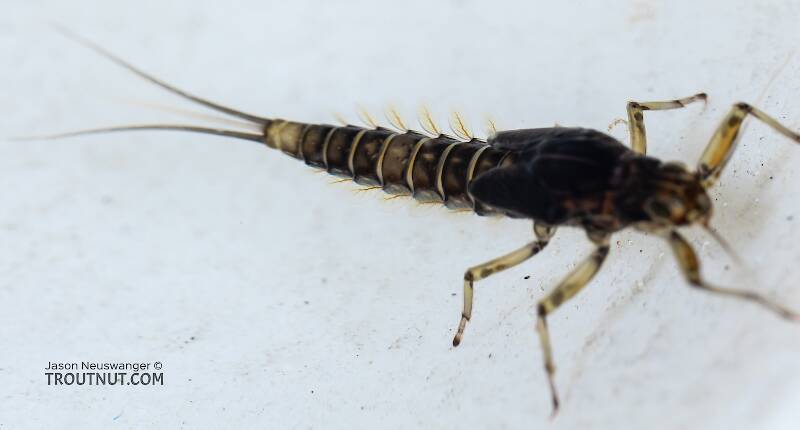
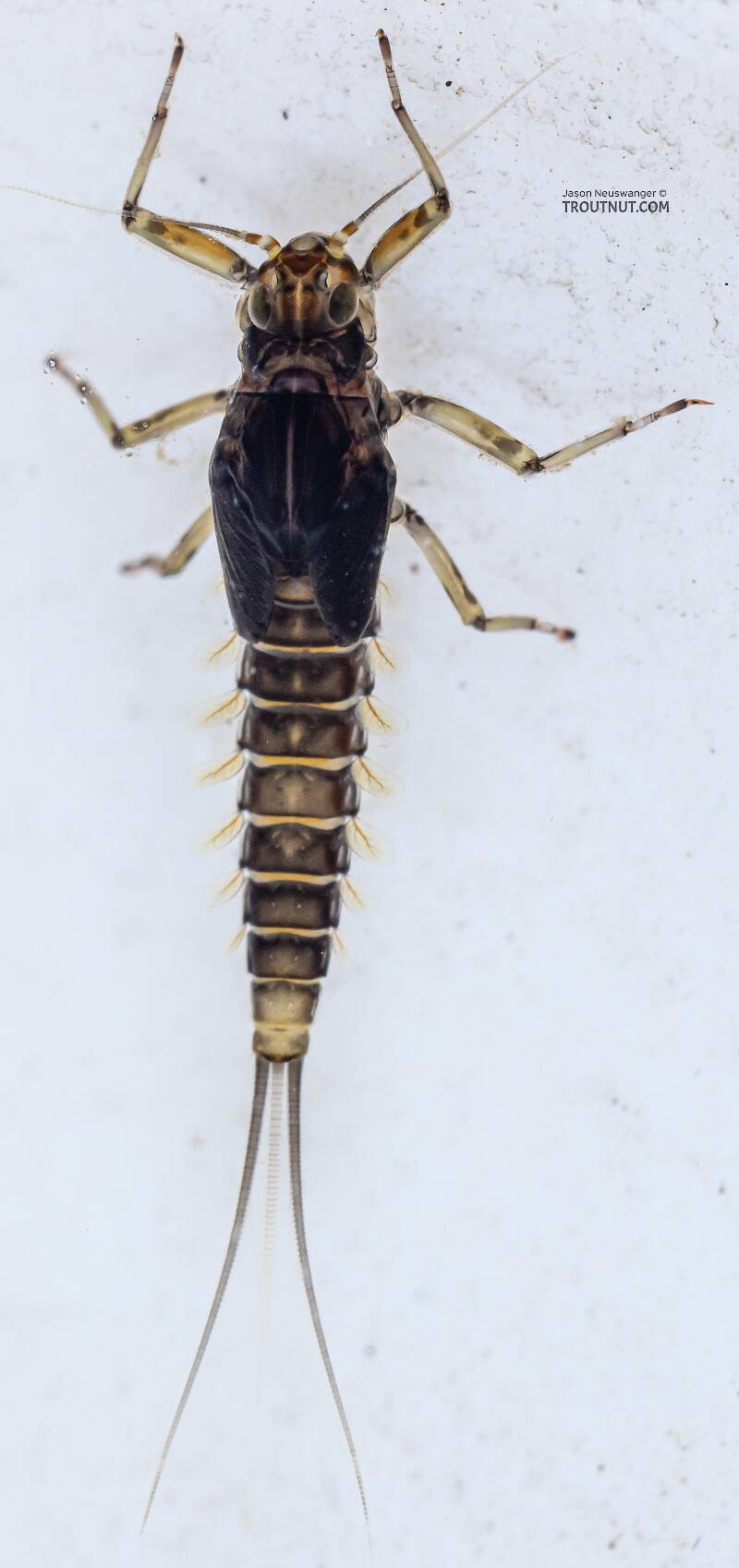
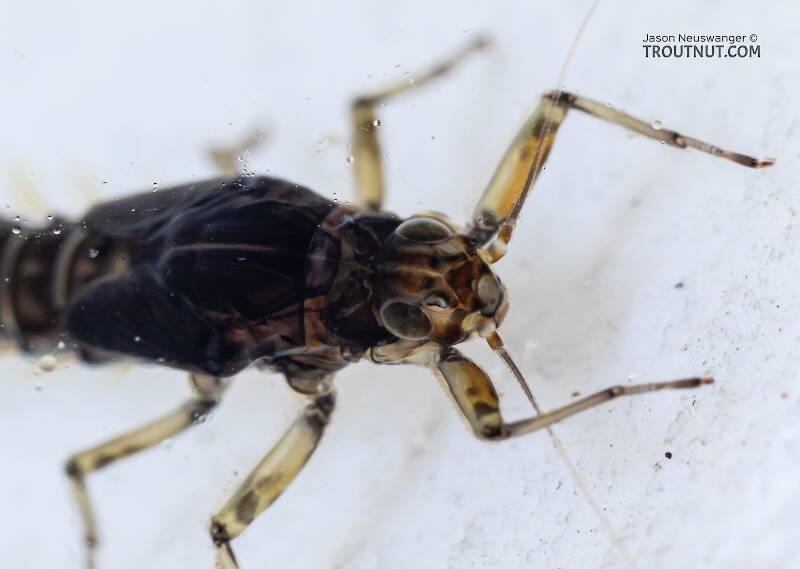
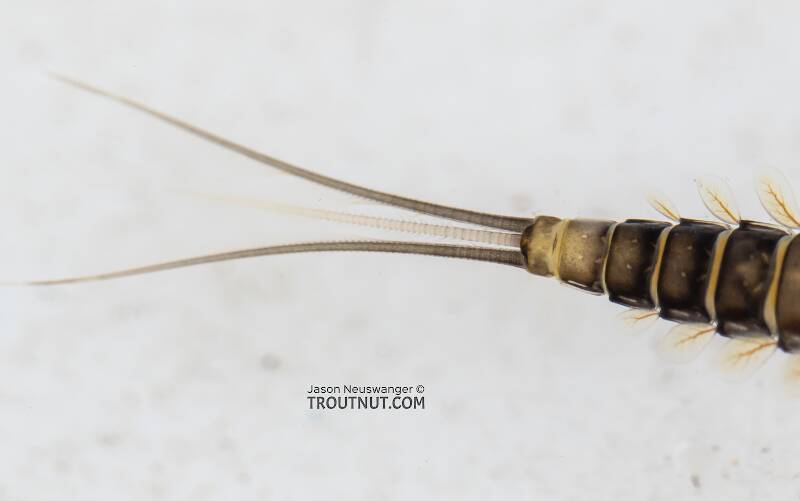
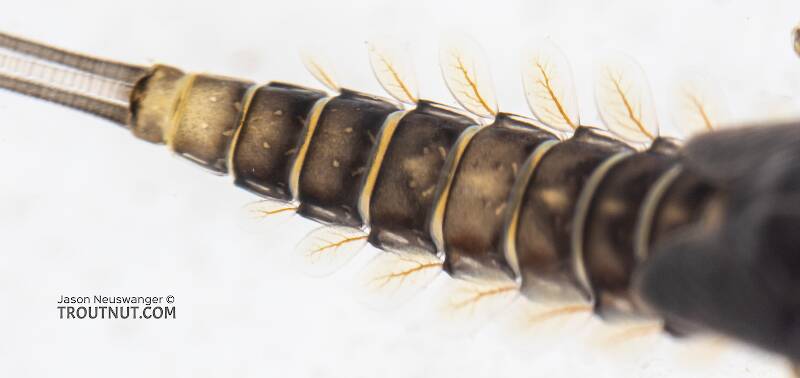
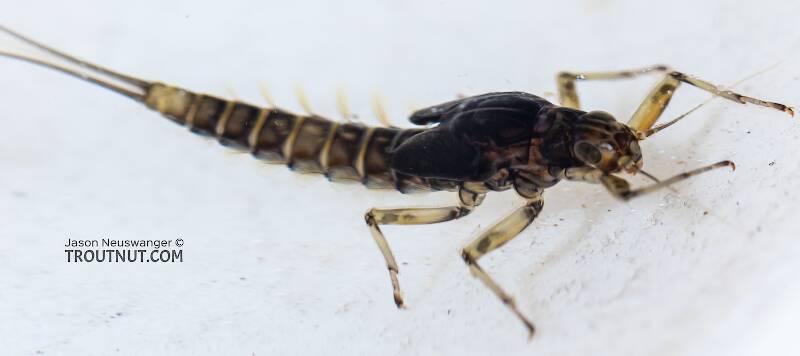
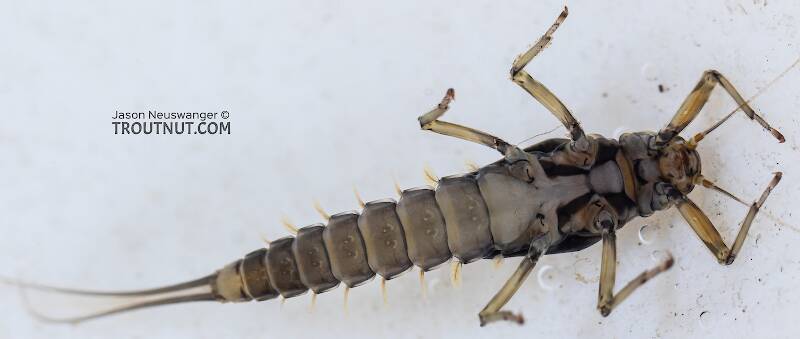
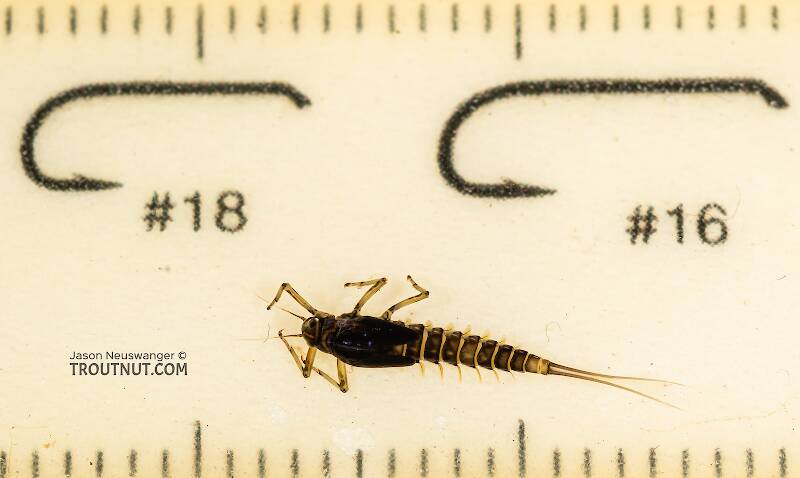
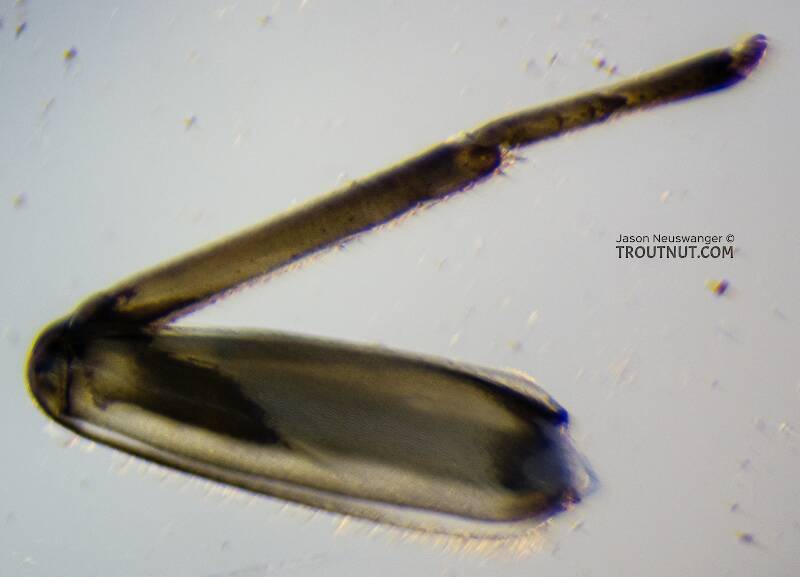
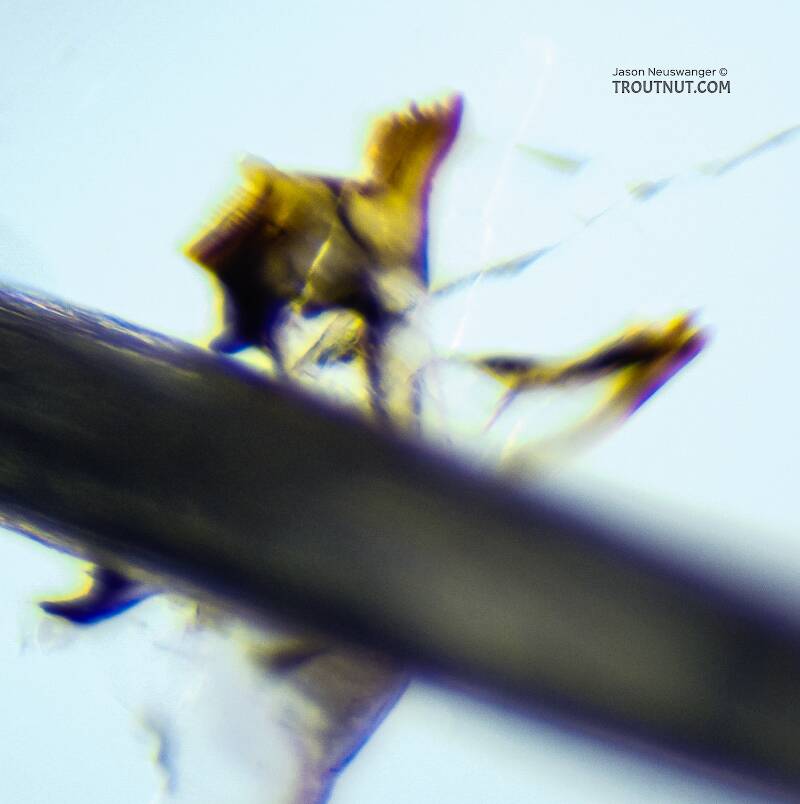
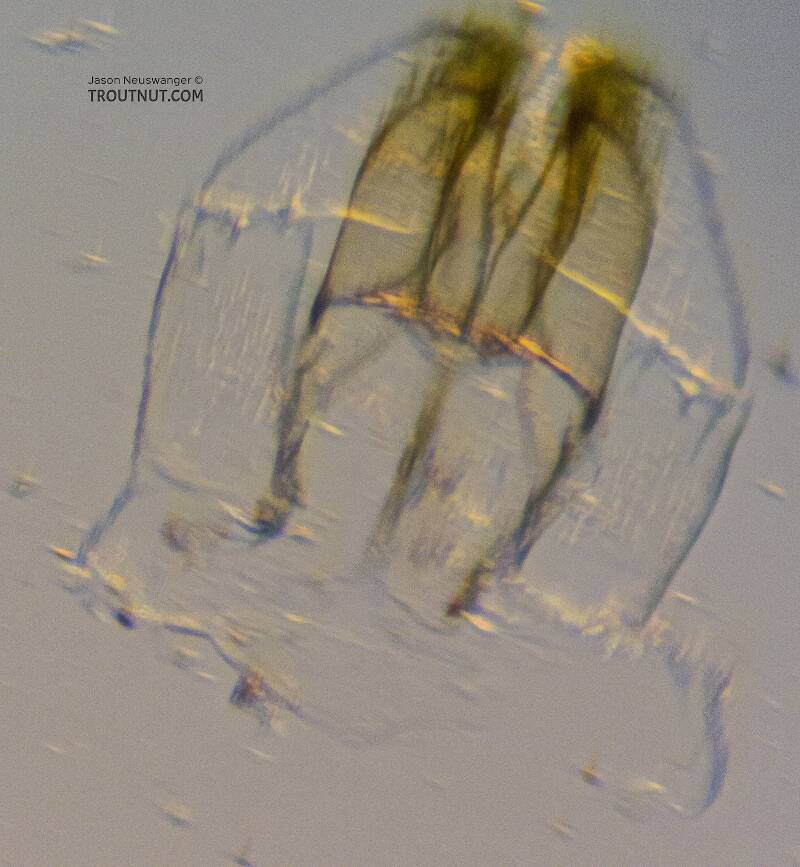
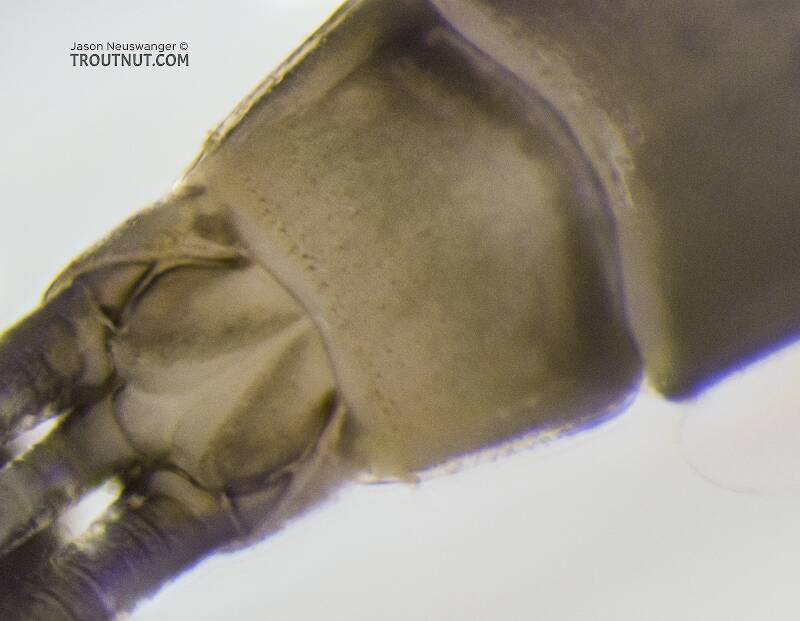
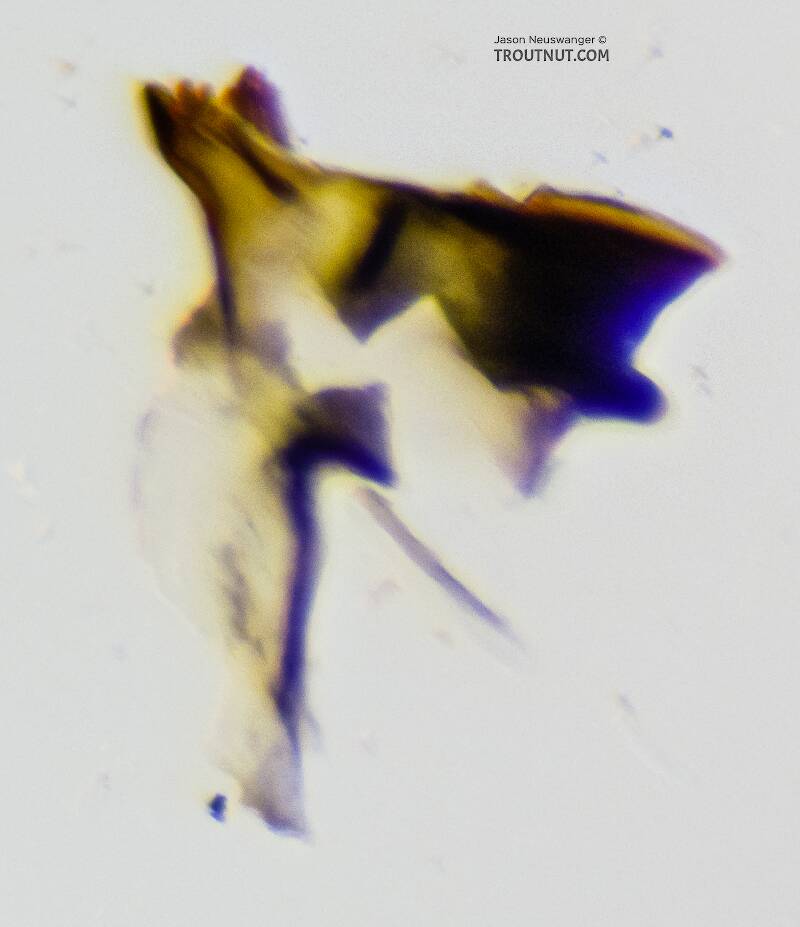
This mayfly was collected from the Yakima River in Washington on April 9th, 2021 and added to Troutnut.com by Troutnut on April 12th, 2021.
Start a Discussion of Nymph
References
- Merritt R.W., Cummins, K.W., and Berg, M.B. 2019. An Introduction to the Aquatic Insects of North America (Fifth Edition). Kendall/Hunt Publishing Company.
Female Baetis tricaudatus (Blue-Winged Olive) Mayfly Nymph Pictures
Collection details
Date: April 9th, 2021
Added to site: April 12th, 2021
Author: Troutnut

